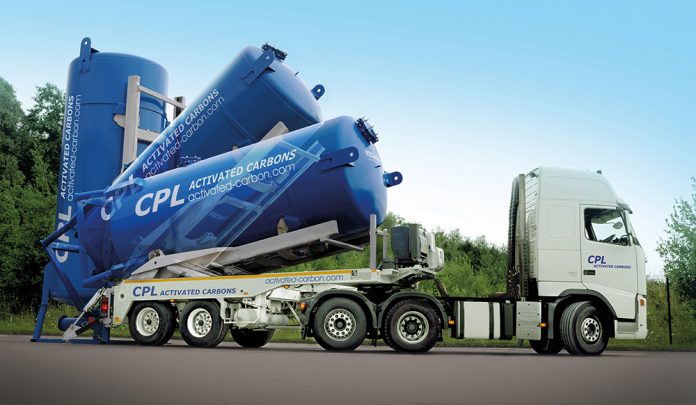Activated carbon is a high purity form of carbon with a very high surface area, making it suitable for a wide range of purification applications in a variety of different sectors.
The water industry has a long history of using activated carbon filtration technology for the purification of liquid and gas phase streams. It is widely used for the purification of drinking water, where its role is to remove a range of taste and odour-forming compounds as well as trace contaminants such as pesticides and pharmaceuticals.
On the wastewater side of the business, carbon filtration is used for general odour management applications as well as for the purification of biogas streams. This can be for either combined heat and power (CHP) engine protection, or as part of the upgrading process to convert raw biogas into biomethane, making it suitable for injection into the gas grid.
Typically, in these biogas applications, the activated carbon’s role is to remove hydrogen sulfide, siloxanes and other volatile organic compounds (VOCs) from the gas streams, to protect the CHP engine from corrosion/deposits or, in the case of biomethane gas-to-grid facilities, to protect or enhance the performance of the downstream biogas upgrading equipment.
Different types of carbons are suitable for removal of the various possible contaminants in a typical biogas stream. Siloxanes and other VOCs are normally removed with a standard carbon grade, typically pellets or larger granules, whereas hydrogen sulfide and other inorganic contaminants are most efficiently removed with an impregnated carbon grade. Depending on the process conditions, notably residual oxygen levels within the biogas stream, different impregnant types can be selected, and an experienced carbon expert can advise on the most suitable and cost-effective choice for a given set of circumstances.
When granular or pelletised carbon is ‘spent’, i.e. it is no longer performing as required due to partial or complete filling of its pores with impurities, it can usually be recycled via a thermal reactivation process in a specialised kiln. Spent carbon is generally categorised into one of two possible types – ‘green’ spent material from drinking water applications, or ‘amber’ spent carbon from industrial/environmental processes such as biogas. These two ‘waste’ streams need to be kept separate, to avoid cross-contamination.
There are many environmental and economic benefits of recycling spent carbon, rather than disposing of it and replacing it with virgin material. It has been calculated, for example, that the carbon footprint associated with reactivation is typically 80—90% lower than virgin carbon.
CPL Activated Carbons is a leading supplier of carbons and services into a wide variety of sectors. The company has recently invested heavily in an expansion of its state-of-the-art reactivation facility, located at Immingham on the Lincolnshire coast, where is has completely separate processing facilities for ‘green’ and ‘amber’ spent carbon streams, a set-up that is particularly appreciated by visitors from UK water utilities.
CPL Activated Carbons, formerly trading as CPL Carbon Link, has been reactivating spent carbon at Immingham since 2013. Initially this was only ‘amber’ list material, but in 2018 the company converted the existing rotary kiln to allow it to handle ‘green’ spent carbons from drinking water treatment plants. At the same time, it installed a brand new, and much larger, kiln to handle the increasing demand for ‘amber’ carbon reactivation, particularly from the growing renewable energy sector here in the UK. The capacity of the new rotary kiln is more than treble the previous set-up, making it by far the largest facility in the UK and indeed one of the biggest in Europe.
Another unique feature of CPL Activated Carbons’ product and services offering is the company’s in-house carbon filter manufacturing capability, thanks to its subsidiary CPL Icon. A range of mobile carbon filters, known as Clean-Flo® units, can be supplied, from small 180 litre drums through to large 30m3 vessels delivered on dedicated tipping trailers. The Clean-Flo® 30m3 VOCSorber® unit is the largest mobile carbon filter on the market, and was developed specifically with the requirements of the biogas industry in mind. Fixed carbon filters can also be supplied, including high pressure variants.
A second advantage of having an in-house engineering capability is that CPL Activated Carbons can assist customers, particularly those who have not used carbon filtration systems before, with the design, manufacture and installation of all necessary pipework and connections. It is all part of CPL’s desire to be the one-stop-shop for all carbon filtration requirements.
CPL Activated Carbons: “The Active Force in Carbon & Service”
Author: David Reay, Marketing Manager, CPL Activated Carbons



